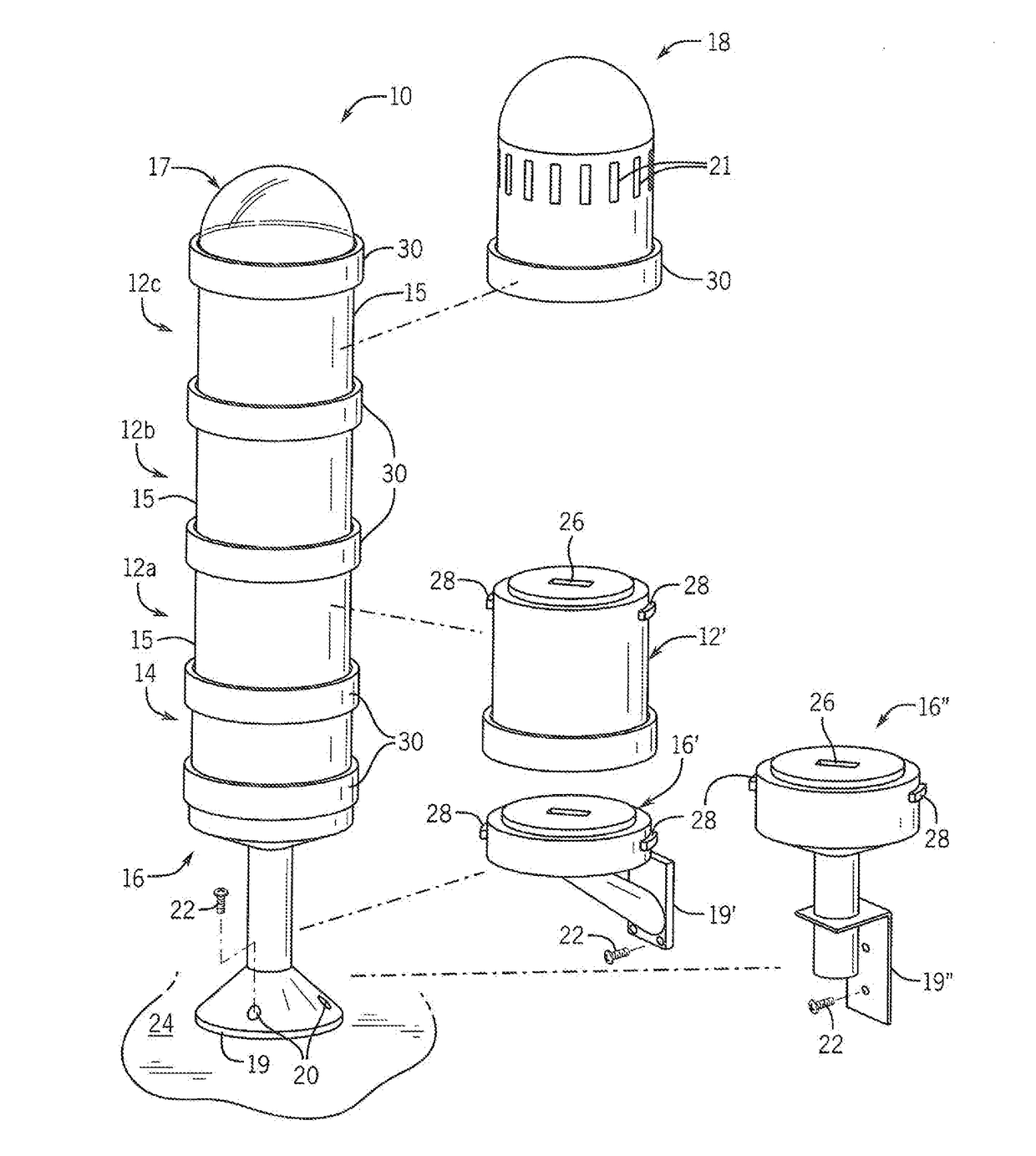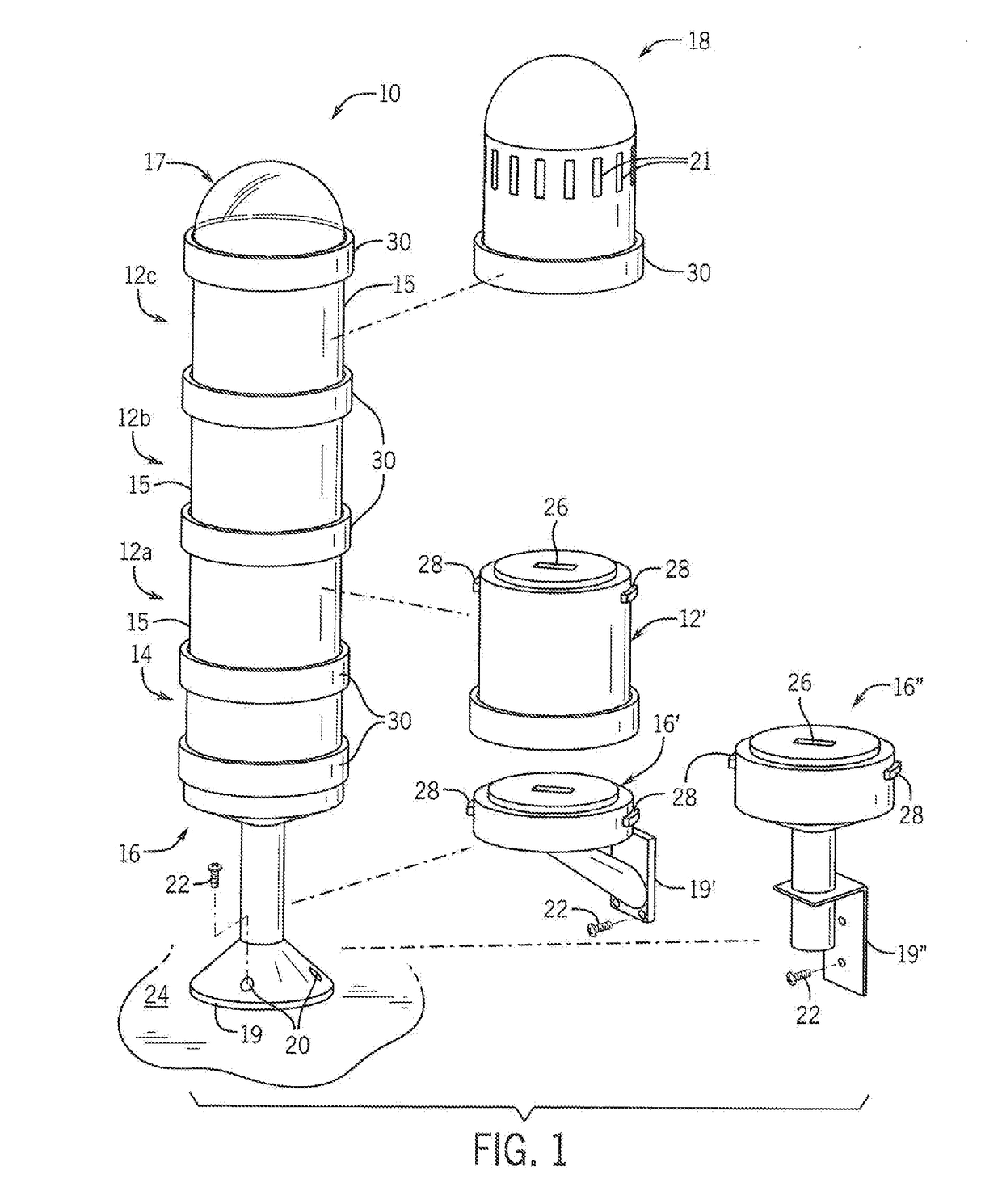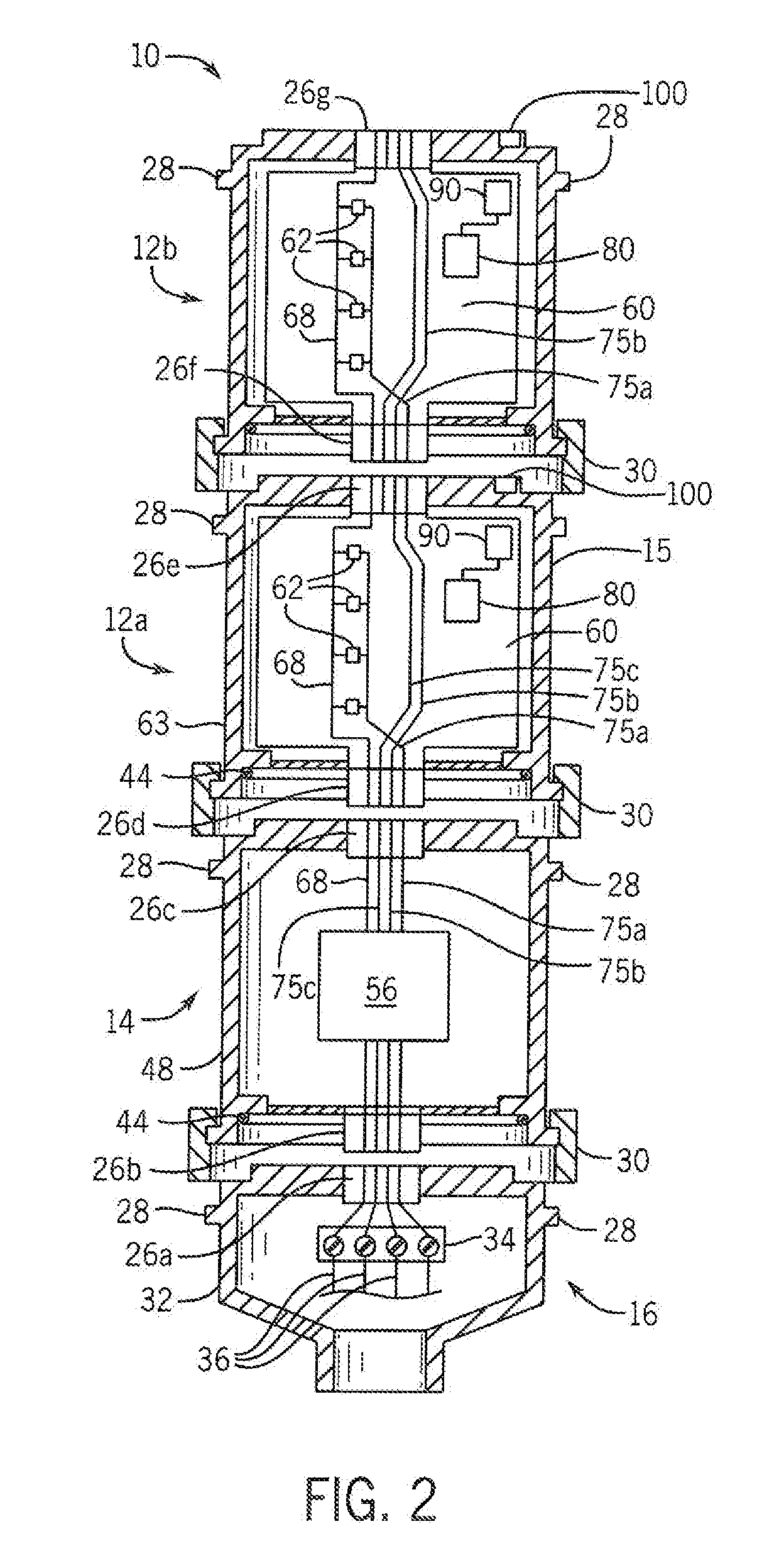System and Method of Identifying a Module in a Stack Light
a module and stack light technology, applied in the field of stack lights, can solve problems such as assembly errors
- Summary
- Abstract
- Description
- Claims
- Application Information
AI Technical Summary
Benefits of technology
Problems solved by technology
Method used
Image
Examples
first embodiment
[0046]A illustrated in FIGS. 3 and 4, the electrical connectors 26 according to the module 12 are illustrated. The electrical connector 26 on the upper surface 104 includes multiple slots 27 and multiple terminals 63 along an upper edge 61 of the circuit board 60. The electrical connector 26 on the lower end of the module 12 includes multiple terminals 67 along the lower edge 65 of the circuit board 60. The upper surface 104 of the housing 15 includes multiple slots 27 of varying lengths extending therethrough. The slots 27 are configured to receive terminals 67 along the lower edge 65 of the circuit board 60 from another module 12 and to allow rotation of the terminals 67 within the slots 27. Because the terminals 67 proximate the outer periphery will travel a greater distance than the terminals 67 in the center of the module for the same amount of rotation of the module, the length of the slots 27 along the outer periphery of the upper surface 104 are longer than the length of the...
second embodiment
[0047]As illustrated in FIG. 7, the electrical connectors 26 according to the module 12 are illustrated. The electrical connector 26 on the upper surface 104 includes spring terminals 69 mounted to the upper surface 104 of the housing 15 and fixed terminals 63 along the upper edge 61 of the circuit board. The electrical connector 26 on the lower end of the module 12 includes multiple terminals 67 along the lower edge 65 of the circuit board 60. As two modules 12 are rotated together, the lower terminals 67 engage the spring terminals 69 causing downward deflection. When the two modules are rotated apart, the spring terminals 69 return to an upward, unbiased position. Either one or both ends of the spring terminals 69 are, in turn electrically connected to the fixed terminals 63 along the upper edge 61 of the circuit board. The biasing force between the spring terminals 69 of one module and the lower terminals 67 of the other module establishes a good electrical connection between th...
PUM
| Property | Measurement | Unit |
|---|---|---|
| diameters | aaaaa | aaaaa |
| diameters | aaaaa | aaaaa |
| diameters | aaaaa | aaaaa |
Abstract
Description
Claims
Application Information
 Login to View More
Login to View More - R&D
- Intellectual Property
- Life Sciences
- Materials
- Tech Scout
- Unparalleled Data Quality
- Higher Quality Content
- 60% Fewer Hallucinations
Browse by: Latest US Patents, China's latest patents, Technical Efficacy Thesaurus, Application Domain, Technology Topic, Popular Technical Reports.
© 2025 PatSnap. All rights reserved.Legal|Privacy policy|Modern Slavery Act Transparency Statement|Sitemap|About US| Contact US: help@patsnap.com



